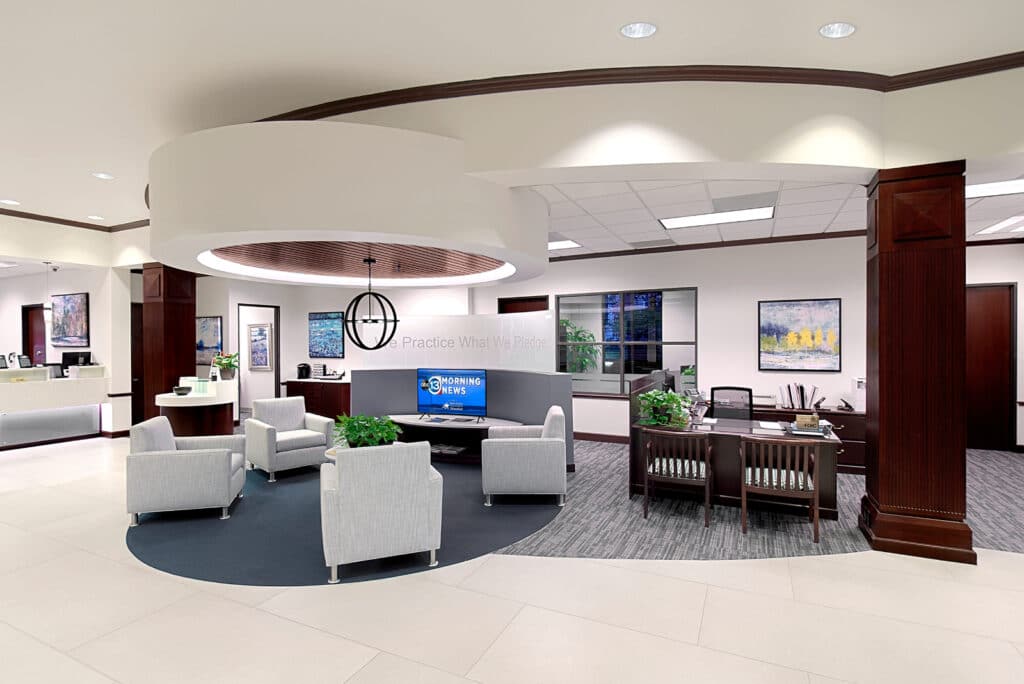Selecting the right building material is a pivotal decision in architectural design. Each material offers unique advantages and comes with its own set of considerations. In this article, we’ll compare the pros and cons of five common building materials: brick, concrete, steel, wood, and glass. By understanding the strengths and limitations of each, you can make an informed choice for your architectural project in Houston, Texas.

Brick:
Pros:
- Timeless Aesthetic: Brick offers a classic and enduring look suitable for various architectural styles.
- Durability: Bricks are known for their longevity and resistance to weathering.
- Thermal Mass: Excellent thermal mass properties help regulate indoor temperatures.
Cons:
- Cost: High-quality bricks can be expensive.
- Weight: Brick buildings require strong foundations and structural support.
- Maintenance: Mortar joints may require periodic maintenance and repointing.
Concrete:
Pros:
- Versatility: Concrete can be molded into various shapes for diverse architectural styles.
- Strength: Concrete structures are strong and durable.
- Fire Resistance: Concrete offers excellent fire resistance.
Cons:
- Environmental Impact: Cement production has a high carbon footprint.
- Cracking: Concrete can crack over time.
- Aesthetic Limitations: Gray appearance may not suit all aesthetics.
Steel:
Pros:
- Strength: Steel is incredibly strong, allowing for open and expansive designs.
- Flexibility: Steel can be molded and shaped for intricate structures.
- Speed of Construction: Steel-framed buildings can be constructed quickly.
Cons:
- Cost: High-quality steel can be expensive.
- Corrosion: Steel can corrode without proper protection.
- Thermal Conductivity: Steel conducts heat.
Wood:
Pros:
- Sustainability: Wood is a renewable resource.
- Aesthetic Appeal: Natural warmth and beauty.
- Insulation: Wood offers good insulation.
Cons:
- Durability: Susceptible to rot and decay without proper treatment.
- Maintenance: Wooden structures may require regular maintenance.
- Fire Risk: Wood is flammable.
Glass:
Pros:
- Transparency: Abundant natural light and views.
- Aesthetics: Modern and sleek designs.
- Energy Efficiency: High-performance glass offers good insulation.
Cons:
- Cost: High-quality, energy-efficient glass can be expensive.
- Privacy: Large expanses of glass may raise privacy concerns.
- Heat Gain: Excessive sunlight can lead to heat gain and glare.
Selecting the right material depends on your project’s goals, design vision, and budget. At Dwight Patterson Architecture, we can help you navigate these choices to ensure a successful architectural outcome in Houston, Texas.
SEO Keywords:
- Comparing building materials in architecture
- Pros and cons of common building materials
- Choosing the right architectural material
- Houston architectural material comparison
- Building material considerations in design
Meta Description: Compare the pros and cons of common building materials—brick, concrete, steel, wood, and glass—for your architectural project in Houston, Texas. Discover the strengths and limitations of each material, considering factors like cost, durability, aesthetics, and sustainability. Learn how Dwight Patterson Architecture can assist in selecting the right building material to achieve your project goals and design vision, ensuring a successful architectural outcome.
